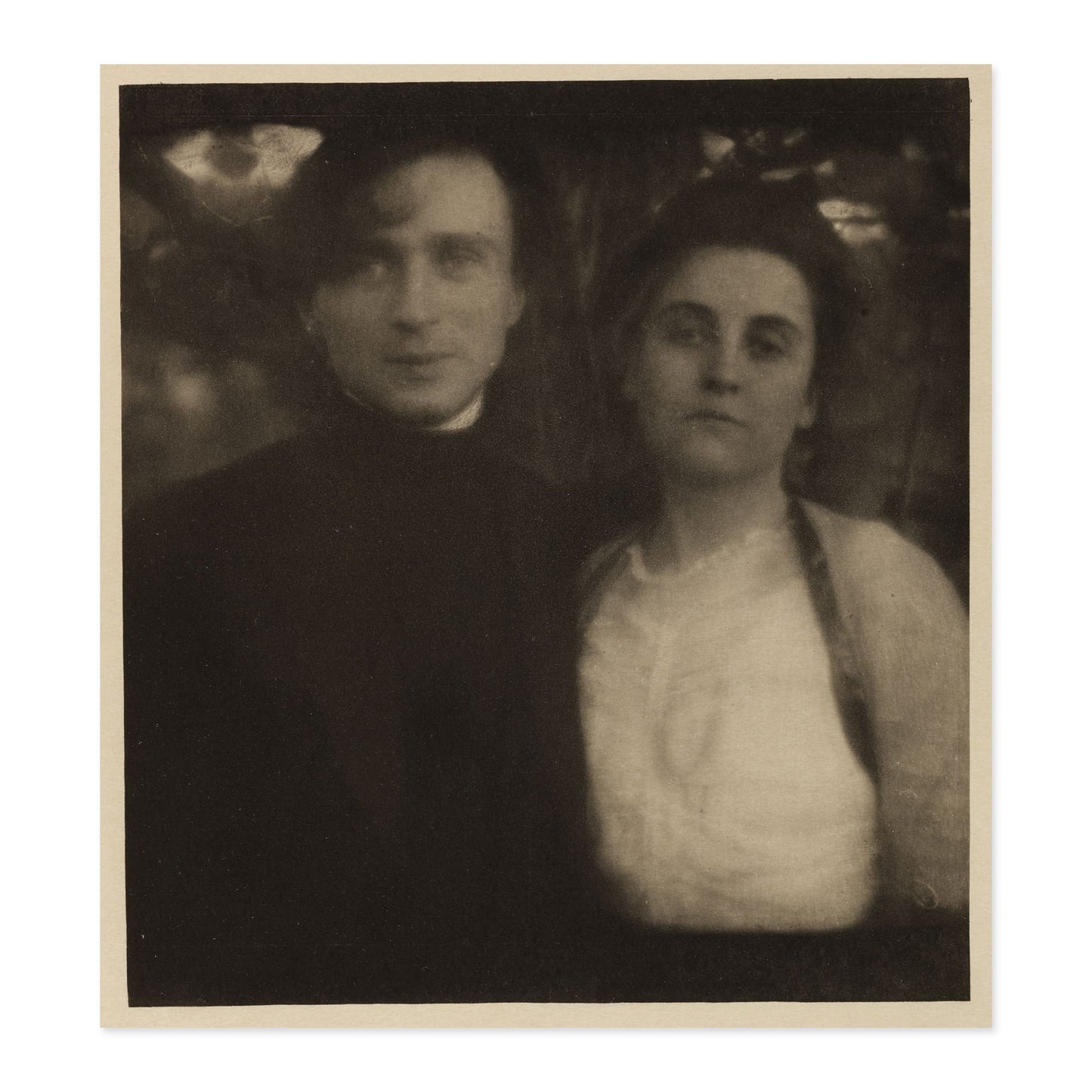Edward Steichen, Portraits - Evening 1906
Edward Steichen, Portraits - Evening 1906
Edward Steichen
Portraits - Evening, 1906
Camera Work Steichen Supplement
Photogravure, 18.7 x 17 cm
As he headed to Paris to study painting and to see the Rodin Pavilion just outside the 1900 Exposition Universelle, twenty-one-year-old Edward J. Steichen stopped in New York. An aspiring painter and an accomplished photographer in the soft-focus, artistic style that came to characterize pictorialism, Steichen made a pilgrimage to the Camera Club of New York to show his work to Alfred Stieglitz. Stieglitz was impressed and bought three of his photographs for the impressive sum of five dollars each. Elated, Steichen left additional photographs from his portfolio for Stieglitz to publish or send to exhibitions, as he saw fit, and then boarded the ship for Europe.
Once in France, Steichen began to focus his energies on photography. He learned the technical intricacies of the gum bichromate process, popular among the members of the Photo-Club de Paris, and developed a reputation as a portraitist of noted artists, writers, and members of society. By the time Steichen returned from Paris, in August 1902, he was perfectly positioned to launch his own career and to serve as Stieglitz’s chief acolyte. Arriving back in New York, Steichen rented a studio on the top floor of a brownstone at 291 Fifth Avenue and “hung out [his] shingle as a professional portrait photographer.”
That same year, Stieglitz announced the formation of the Photo-Secession—the name he gave to the loose-knit group of photographers he exhibited, published, and promoted during the next decade and a half—and the publication of Camera Work. Over the fifteen-year, fifty-issue run of Camera Work, no other artist would be featured as prominently as Steichen, who had sixty-five photographs and three paintings reproduced in fifteen issues, including a “Special Steichen Supplement” in April 1906 and an all-Steichen double issue in 1913.
In 1905, Steichen arranged for Stieglitz to take over the lease of his studio and two adjacent rooms for use as a showcase for the best of artistic photography and avant-garde art; they called it the Little Galleries of the Photo-Secession but insiders knew it simply as “291.” Among the hundred photographs in the first show, which opened on November 25, 1905, were eleven by Steichen, including Portraits—Evening.
Notwithstanding his prominence in the pages of Camera Work and on the walls of the Little Galleries and his success as a portrait photographer, in the autumn of 1906 Steichen returned to France with his family in hopes of resuscitating his idled painting career.
Steichen had played a critical role in broadening Stieglitz’s interests by sending European modern art to New York for display at 291—Braque, Picasso, Cézanne, Rodin, Matisse— but the two began to grow apart in their aesthetic ideas about photography.Steichen’s embrace of editorial and commercial photography in his own work—to Stieglitz’s mind, nothing less than apostasy—drove a still greater wedge between the former mentor and protégé.
Daniel, Malcolm. “Edward J. Steichen (1879–1973): The Photo-Secession Years.” In Heilbrunn Timeline of Art History. New York: The Metropolitan Museum of Art, 2000–. http://www.metmuseum.org/toah/hd/stei/hd_stei.htm (November 2010)
Share


